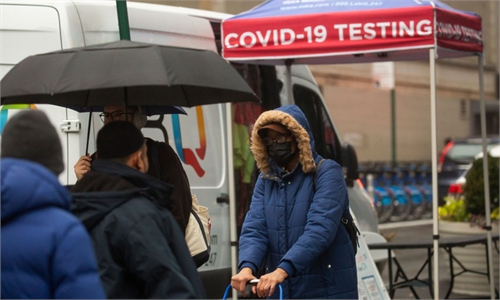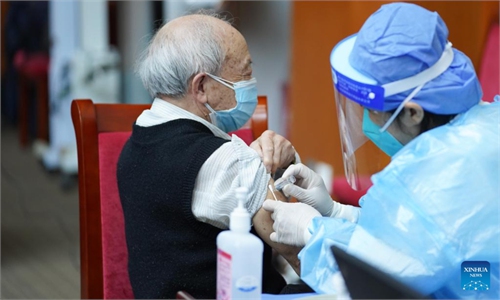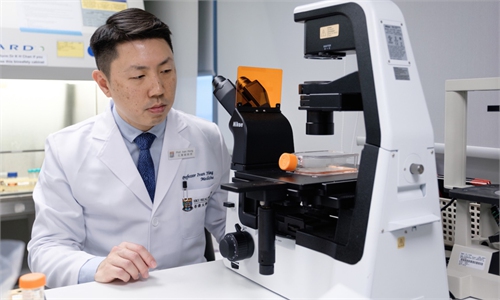China’s disease control and prevention center dispels rumors over BQ.1.1, nicknamed Felhunter

People line at a drug store in Beijing on December 8, 2022. Photo: VCG
China's disease control and prevention center clarified on Tuesday that BQ.1.1 shows no higher pathogenicity than BA.5. and is not the dominating cases in China as rumors circulating on Chinese social media platforms claim that the variant, nicknamed Felhunter, was "highly contagious and deadly" and was sweeping across Japan.
BQ.1 is a sixth-generation sublineage of BA.5 and BQ.1.1 is the first generation sub-branch of BQ.1. The pathogenicity of these sub-branches is significantly weakened, and the proportion of severe diseases and deaths caused by these sub-branches is significantly lower than that of the strains circulating at the early stage, the Chinese Center for Disease Control and Prevention (CDC) said in an article on its WeChat account on Tuesday.
The BQ.1 variant was first detected in June in Nigeria. In September, BQ.1 and its descendant sub-branches started to dominate new infections in European and American countries, and the proportion of cases linked to the strain increased month by month. By mid-October, it came to gradually dominate new infections in countries and regions in Asia such as Japan and Singapore, the center said.
So far, the BQ.1 and its sub-branches had been detected in 49 cases in nine provinces in China, but had have not been widely prevalent. Patients infected with BQ.1 and its sub-branches had not showed severer diseases than those infected with other variants. The variants that currently dominate China is still BA.5.2 and BF.7, which are also two sublineages of BA.5, the center revealed.
BQ.1 has attracted worldwide attention, but no country or region in the world had reported data that indicated an increase in the pathogenicity of BQ.1 and its sub-branches, nor had there been any report of an increase in hospitalization or mortality amid the spread of them. A recent animal study in Japan showed that the pathogenicity of BQ.1.1 may be no higher that of BA.5, according to the center.
The center stressed that most people would only have no or mild symptoms after infection and it would continue to monitor the mutation of Omicron and undertake timely evaluation of new stronger variants in order to provide scientific support for the country to continue to optimize epidemic-prevention measures.
Global Times



